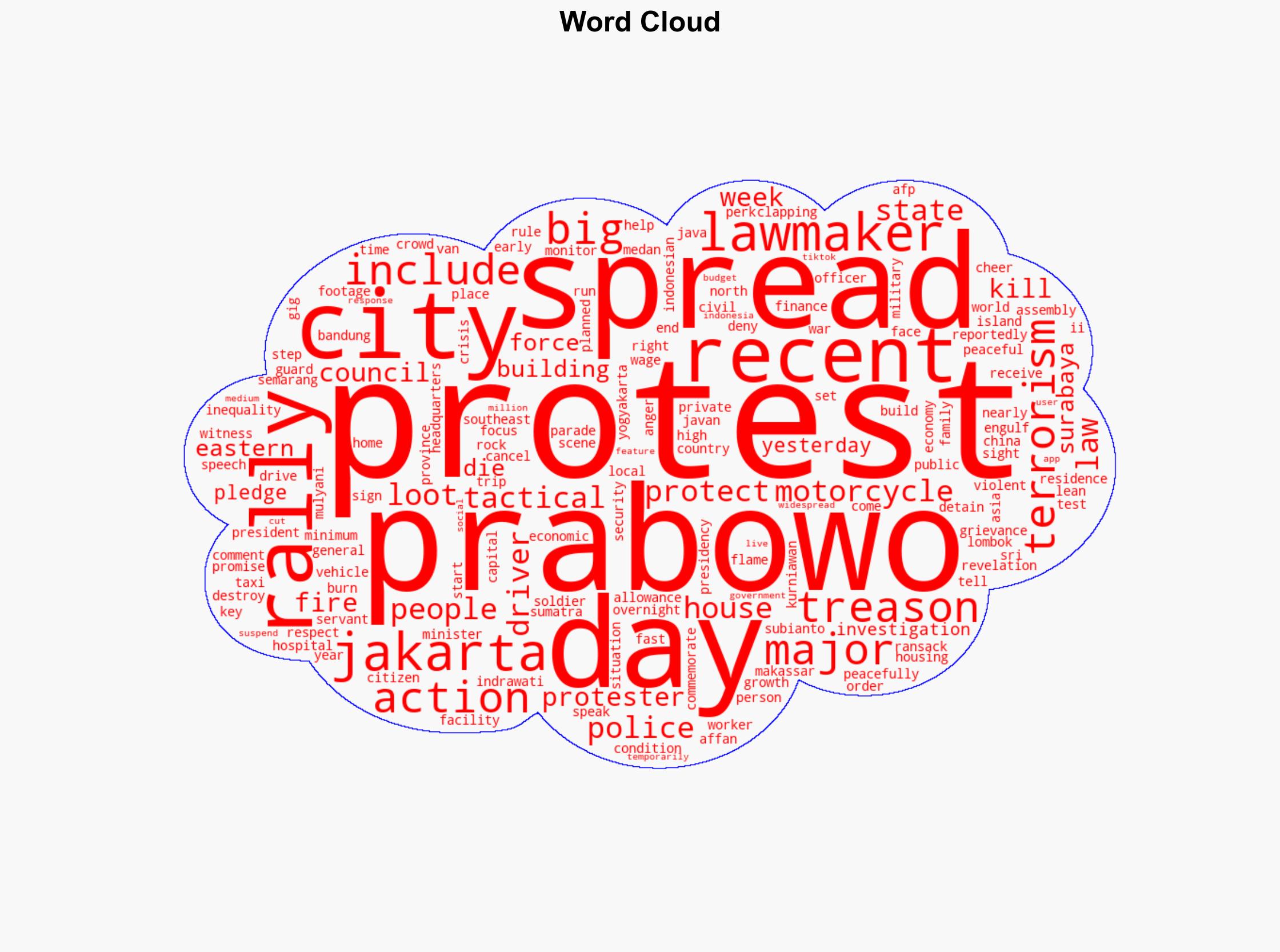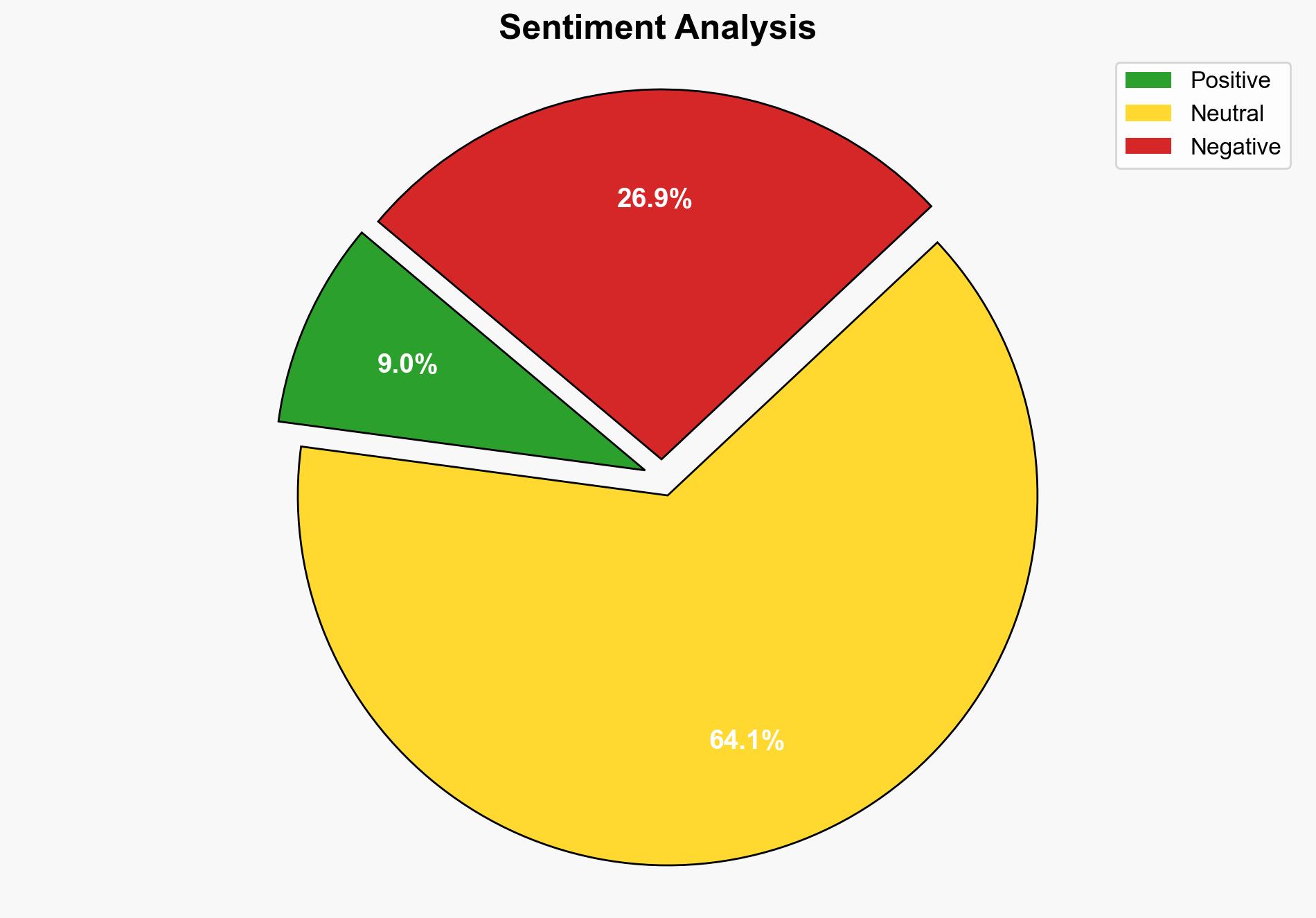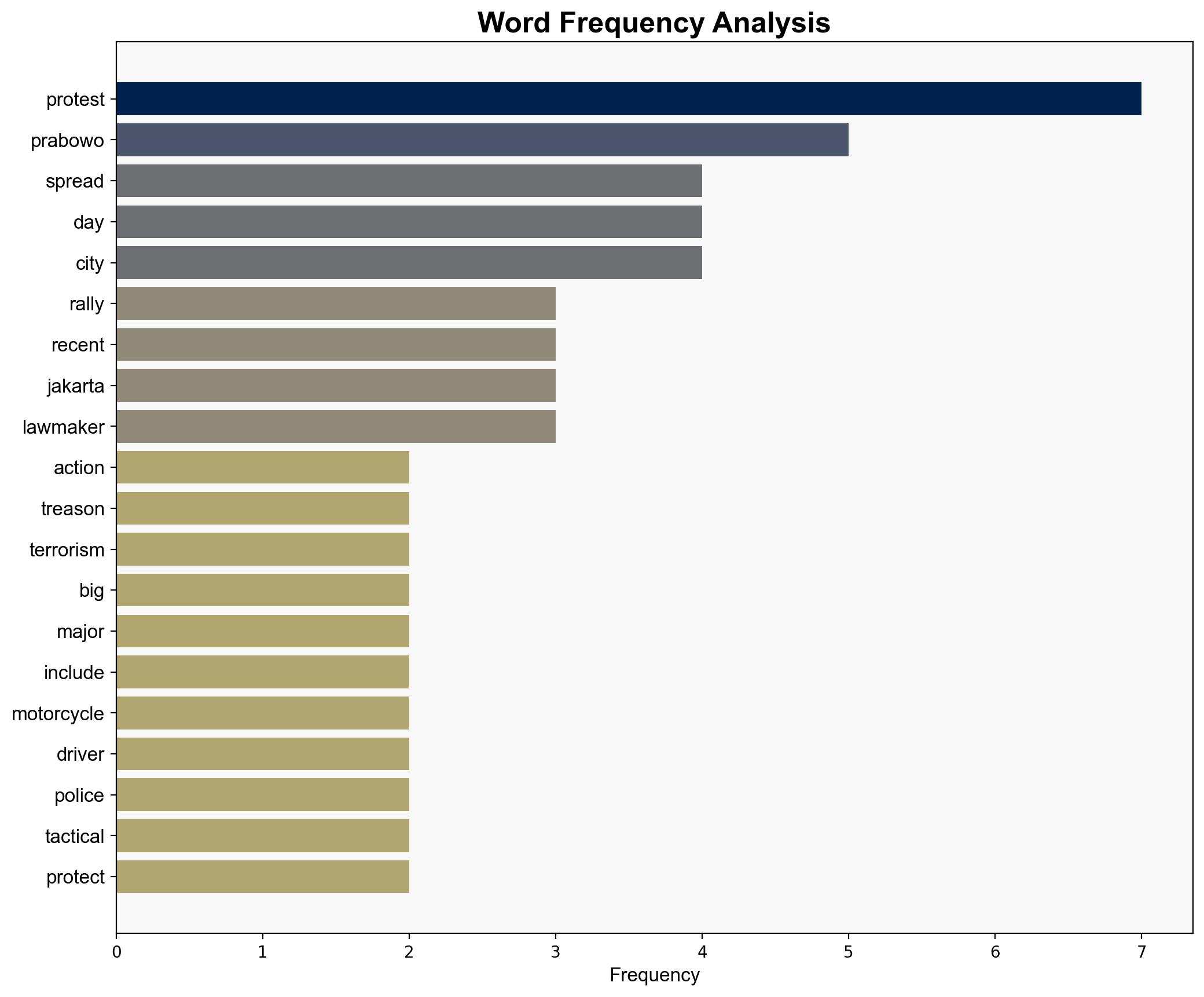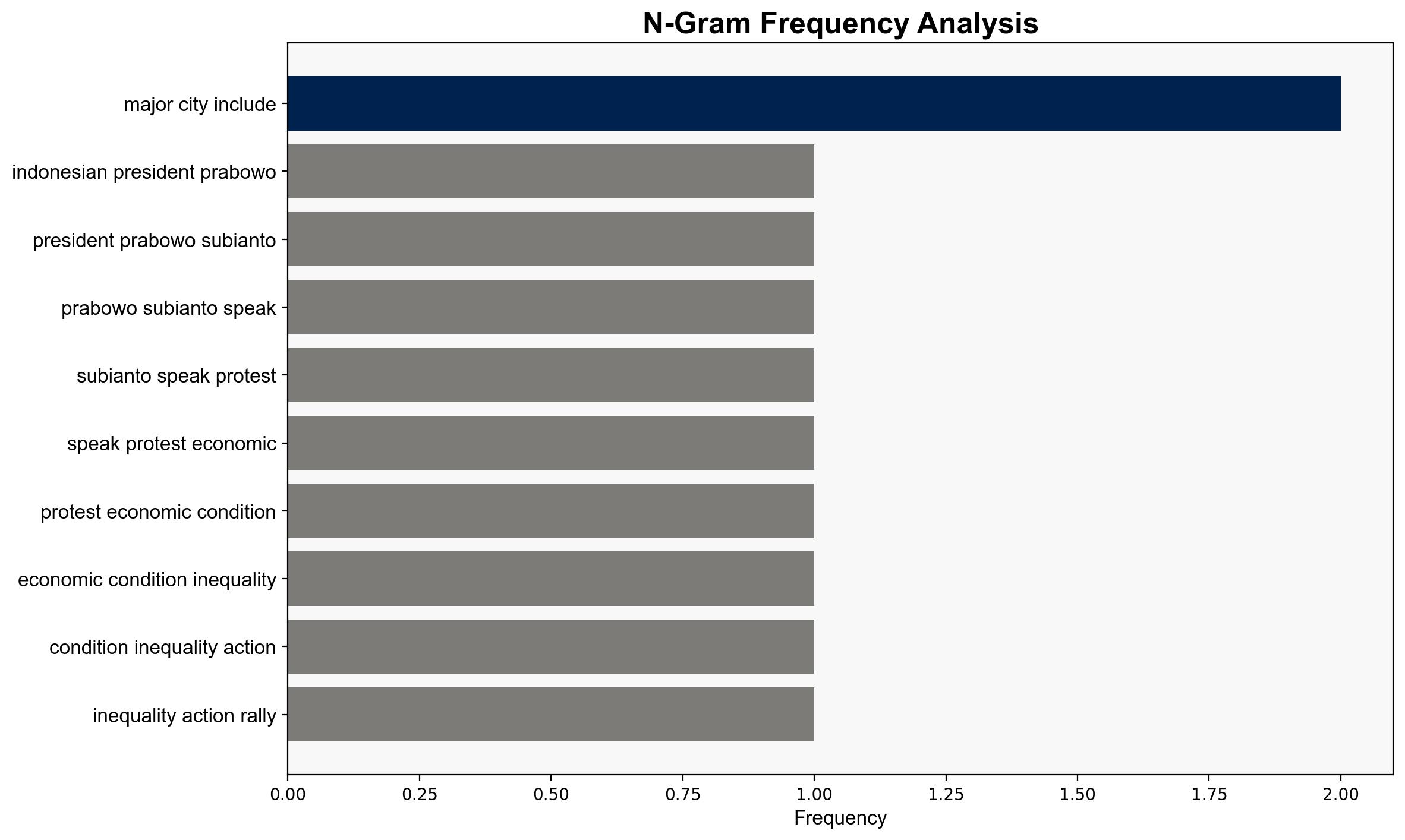Indonesia leader says some protests leaning to ‘treason’ – RTE
Published on: 2025-08-31
Intelligence Report: Indonesia leader says some protests leaning to ‘treason’ – RTE
1. BLUF (Bottom Line Up Front)
The protests in Indonesia, sparked by economic grievances and perceived inequality, have escalated to significant unrest in major cities. The government’s characterization of these actions as potentially treasonous suggests a strategic pivot towards a more stringent response. The most supported hypothesis is that the protests are primarily driven by economic discontent rather than organized treasonous intent. Confidence level: Moderate. Recommended action: Increase intelligence collection on protest organization and external influences to better understand underlying motivations and prevent escalation.
2. Competing Hypotheses
1. **Hypothesis A**: The protests are primarily driven by genuine economic grievances and inequality, with no substantial evidence of organized treasonous intent.
2. **Hypothesis B**: The protests are being manipulated by external or internal actors with the intent to destabilize the government, potentially amounting to treason.
Using ACH 2.0, Hypothesis A is better supported due to the widespread nature of the protests, the focus on economic issues, and the lack of concrete evidence linking protest leaders to treasonous activities. Hypothesis B is less supported but cannot be entirely dismissed without further intelligence.
3. Key Assumptions and Red Flags
– **Assumptions**: It is assumed that the protests are spontaneous and not centrally coordinated. The government’s narrative of treason may be influenced by a need to justify a stronger response.
– **Red Flags**: The rapid spread of protests and the involvement of diverse groups could indicate underlying coordination. The suspension of social media features suggests attempts to control information flow, which could obscure true protest motivations.
4. Implications and Strategic Risks
The protests pose a risk of escalating into broader civil unrest, potentially destabilizing the region. Economic impacts could be severe if protests disrupt key industries or lead to international investor withdrawal. The labeling of protests as treason could justify harsh crackdowns, increasing human rights concerns and international scrutiny. Cybersecurity risks may arise if protestors or external actors use digital platforms to coordinate actions or spread misinformation.
5. Recommendations and Outlook
- Enhance monitoring of social media and communication channels to identify protest leaders and potential external influences.
- Engage in dialogue with protest leaders to address economic grievances and reduce tensions.
- Prepare for potential escalation scenarios, including increased violence or government crackdowns.
- Best case: Protests lead to constructive dialogue and policy reforms. Worst case: Escalation into widespread violence and governmental instability. Most likely: Continued protests with sporadic violence and government attempts at containment.
6. Key Individuals and Entities
– Prabowo Subianto
– Sri Mulyani Indrawati
– Affan Kurniawan
7. Thematic Tags
national security threats, cybersecurity, counter-terrorism, regional focus





